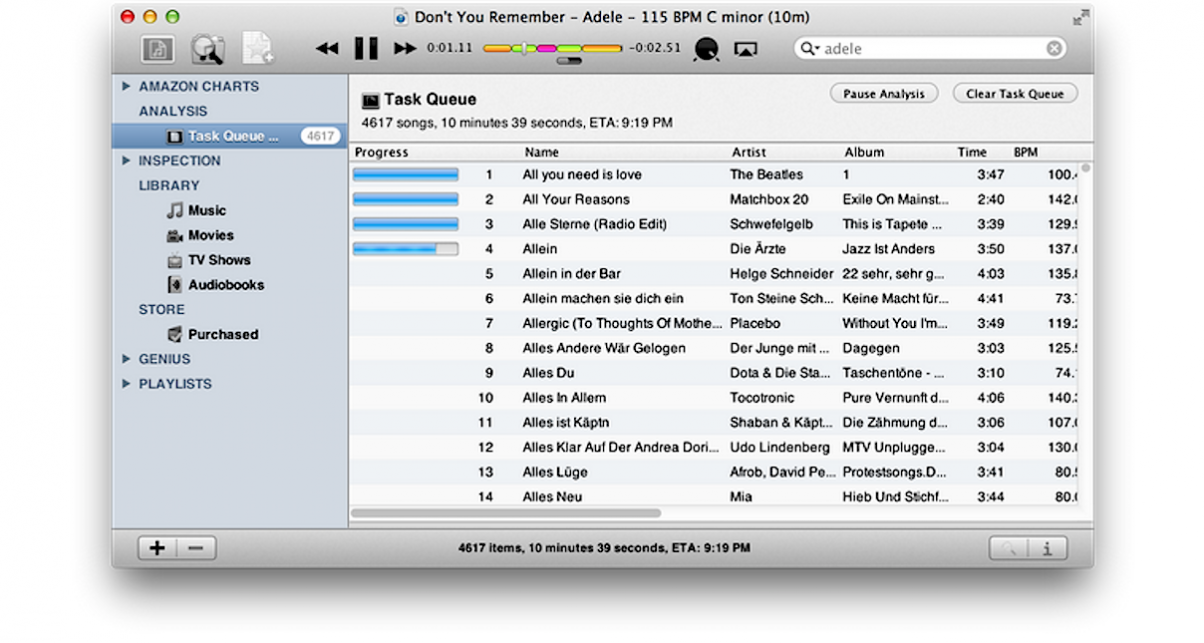
Digital DJ Tips member Dave writes: “I have returned to DJing after about a 30-year gap. Inevitably I have had to go down the ‘digital’ route, which has meant a steep learning curve. Problem is I am finding that for every hour of practise I put into beatmatching and learning what my controller can really do, I spend a day trying to organise my music in Serato DJ / iTunes.
“This entails finding ‘lost’ files, deleting corrupt files and duplicates and various other housekeeping tasks around my music collection. Without hiring a dominatrix to stand over me and crack the whip, how can I avoid constantly getting bogged down in the details and really start enjoying the learning process and improving my skills?”
Digital DJ Tips says:
Here’s how I’d do it. You might change some of the details, but the principles I think are sound.
Firstly, be drastic! Remove all music – every single last bit – from iTunes. Empty your Serato library too. Now, only use iTunes for your DJ music. Add stuff in as you need it and only add what you 1. truly like and 2. think you can use in your DJing. Consider using a program like the excellent beaTunes to add process to your initial manual “wrestling your music into shape” endeavours, but the less music you start with in the first place, the quicker it’ll be.
Allow iTunes to keep its own copy of your lean, clean music in its library (the setting is in the preferences in the Prefs), then back up your iTunes music folder weekly and don’t worry about keeping music anywhere else – download folders etc. Now you can at least be sure your music “exists” and won’t disappear if your computer hard disk dies, as you’re keeping it all in one place and backing it up. This replicates to an extent the “physical” confident feel of owning actual records, CDs etc.
Decide on what info you want to attach to each track (title, artist, featured artist, genre, artwork etc). Use a limited number of genres, and don’t be precious on behalf of the makers of the music when it comes to categorising it – if you think it’s disco or funk or techno, that’s the genre you tag it with. Genres are for your use, nobody else’s. Less is more, again. Keep it all simple.
Down the line, prune that library! Remember the two questions that allowed tunes into your library in the first place: Do you like it, and can you use it in your DJing? If you’ve gone off a tune, and you don’t think it’s a dancefloor smash any more (overplayed, never was, whatever), get rid. If you can’t bear to throw away, put on a hard disk in the top of your wardrobe. I just hit “delete”. Life’s too short and there are always new musical thrills around the corner.
Bottom line: Have a system. Keep it simple so you can stick to it. Remember, this is your DJ collection, not a big, bloated trophy lifetime’s work. Every single tune has to earn its place in there. And less is definitely more.
Alternatively, hire a dominatrix. First ideas are sometimes the best. Could be fun…
Do you have any nuggets of info to help Dave get more practice timer and less organisation hassle? Did you face a similar situation when returning to DJing yourself? Please share your thoughts below.





![How Much To Spend On Your First DJ Set-Up [Live DJing Q&A With Phil Morse] How Much To Spend On Your First DJ Set-Up [Live DJing Q&A With Phil Morse]](https://cdn.digitaldjtips.com/app/uploads/2023/05/10150246/546463231-first-dj-setup-blank-website.jpg)
![Getting Kids Into DJing, DJing With Disabilities, Small USB Controllers [Podcast] Getting Kids Into DJing, DJing With Disabilities, Small USB Controllers [Podcast]](https://cdn.digitaldjtips.com/app/uploads/2024/03/20175506/podcastwebsiteidea-150x150.jpg)

